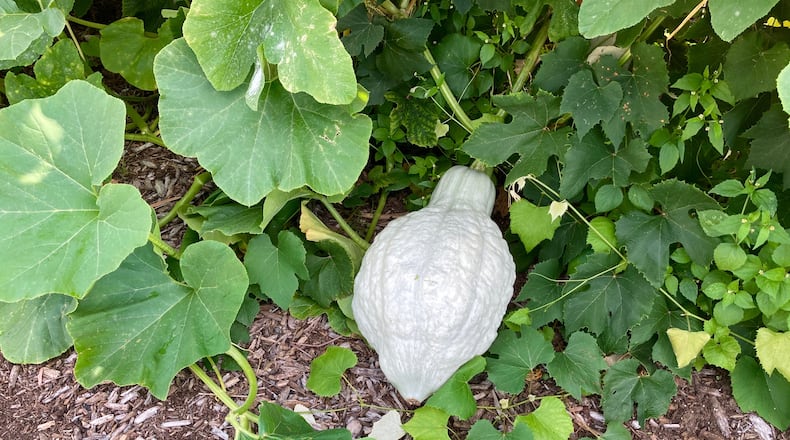One of the topics that was particularly interesting was the use of trap crops in vegetable production. A trap crop is something that is planted near the desired crop to attract pests instead of them feeding on the desired crop.
For instance, a researcher from Alabama does quite a bit of research on trap crops and discussed the use of hubbard squash as a trap crop for squash bugs and cucumber beetles.
His research was promising; hubbard squash is a great trap crop for these two pest species when growing cucumbers and squash.
These two pests can cause horrible damage on zucchini, pumpkins, cucumbers, and other cucurbits in August. These pests also like and seem to go to the hubbard squash first.
The amount of these pests on the desired species, when using hubbard as a trap crop was lower than those without the trap crop.
Now before you go and plant all hubbard squash around your garden, there are some items that need to be understood before you are successful with a trap crop.
First, you need to take care of the trap crop. If the hubbard squash isn’t watered and cared for like your desired crop, it won’t attract the pests.
Second, you can’t overplant the hubbard squash around your desired crop as it can take over. Therefore, you must locate it near the desired crop and in an area where the pests are likely to come from.
For instance, these pests overwinter in weedy areas. Therefore, scout for this and plant accordingly.
Finally, if all goes well, and hubbard squash does its job, you can spray the hubbard when pests are at their peak and knock down the population that may eventually wind up on your good plants.
If populations are high, you will have “creeping” of the bad pests to the good plants. You can’t count on the trap crop to be perfect.
You will still be able to eat the hubbard squash, which is wonderful if you like squash, as the insects don’t bother the outside as much as they do on pumpkins, etc.
Trap crops are not new – many commercial vegetable growers use them as a tool in their arsenal for pest control. They look at numerous ways to control pests with minimal inputs and minimal use of pesticides.
If you are a regular reader, you know I have mentioned integrated pest management many times. Trap crops are one of those tools used in IPM.
Pamela Corle-Bennett is the state master gardener volunteer coordinator and horticulture educator for Ohio State University Extension. Contact her by email at bennett.27@osu.edu.
